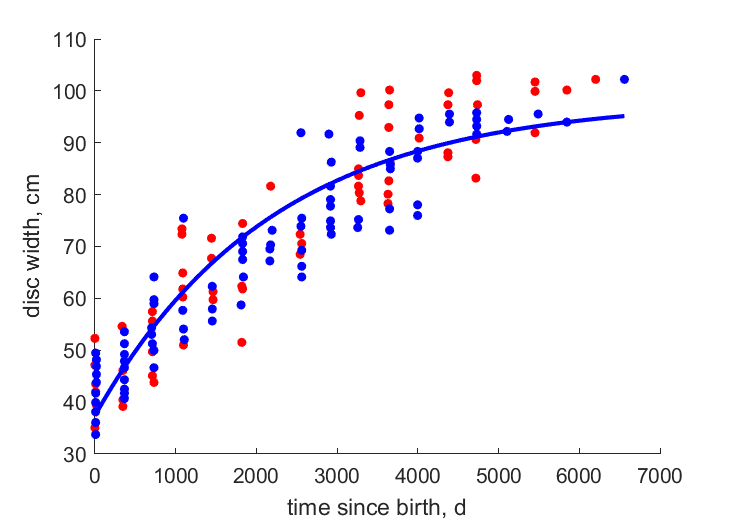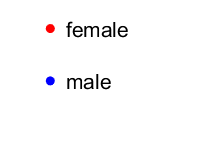Predictions & Data for this entry
| Model: std | climate: MA, MB | migrate: | phylum: |
| COMPLETE = 2.5 | ecozone: MAW | food: biCi | class: |
| MRE = 0.082 | habitat: 0iMpe | gender: D | order: |
| SMSE = 0.010 | embryo: Mv | reprod: O | family: |
Zero-variate data
| Data | Observed | Predicted | (RE) | Unit | Description | Reference |
|---|---|---|---|---|---|---|
| ab | 365 | 438.1 | (0.2003) | d | age at birth | guess |
| am | 9490 | 9519 | (0.003045) | d | life span | Neer2005 |
| Lb | 40 | 37.52 | (0.06207) | cm | disc width at birth | Neer2005 |
| Lp | 65.3 | 64.45 | (0.01298) | cm | disc width at puberty | fishbase |
| Li | 120 | 123.1 | (0.02557) | cm | ultimate disc width | fishbase |
| Wwi | 8300 | 7999 | (0.03626) | g | ultimate wet weight | Neer2005 |
| Ri | 0.00274 | 0.002754 | (0.005087) | #/d | maximum reprod rate | Neer2005 |
Uni- and bivariate data
| Data | Figure | Independent variable | Dependent variable | (RE) | Reference |
|---|---|---|---|---|---|
| tL_f |   | time since birth | disc width | (0.08857) | Neer2005 |
| tL_m |   | time since birth | disc width | (0.0813) | Neer2005 |
Pseudo-data at Tref = 20°C
| Data | Generalised animal | Rhinoptera bonasus | Unit | Description |
|---|---|---|---|---|
| v | 0.02 | 0.02199 | cm/d | energy conductance |
| p_M | 18 | 6.769 | J/d.cm^3 | vol-spec som maint |
| k_J | 0.002 | 0.0003857 | 1/d | maturity maint rate coefficient |
| k | 0.3 | 0.3011 | - | maintenance ratio |
| kap | 0.8 | 0.9155 | - | allocation fraction to soma |
| kap_G | 0.8 | 0.7919 | - | growth efficiency |
| kap_R | 0.95 | 0.95 | - | reproduction efficiency |
Discussion
- The cost for milk secretion is added to the investment from the reproduction buffer.
- Males are supposed not to differ from females
Facts
- At first, they are enclosed in an egg case while the developing embryos feed on the yolk. After the egg hatches, the pup remains in the oviduct and receives nourishment from a milky secretion (Ref: fishbase)
Bibliography